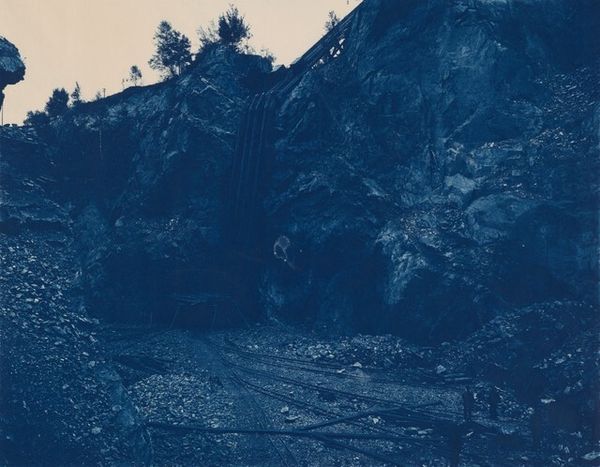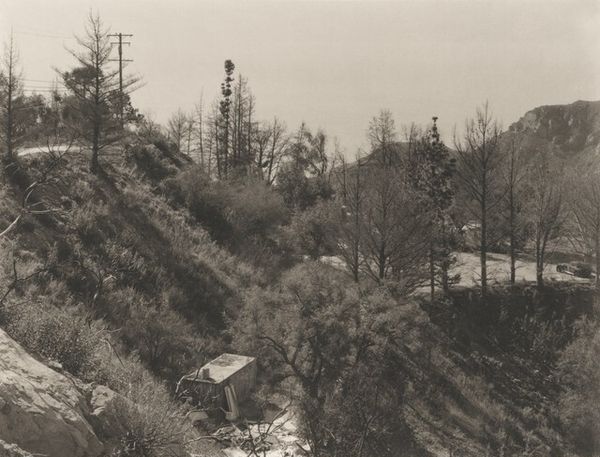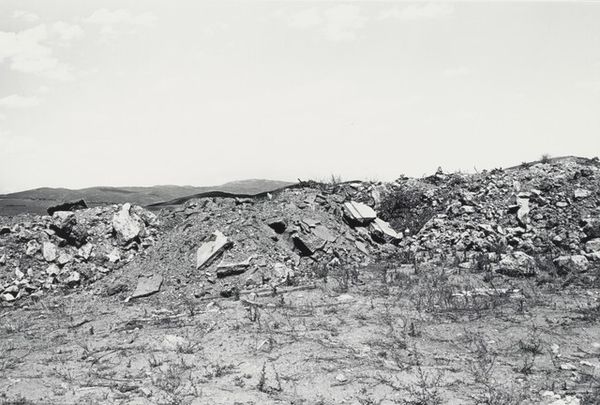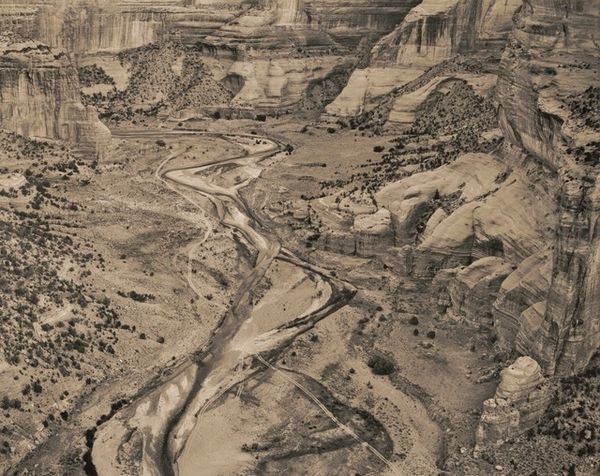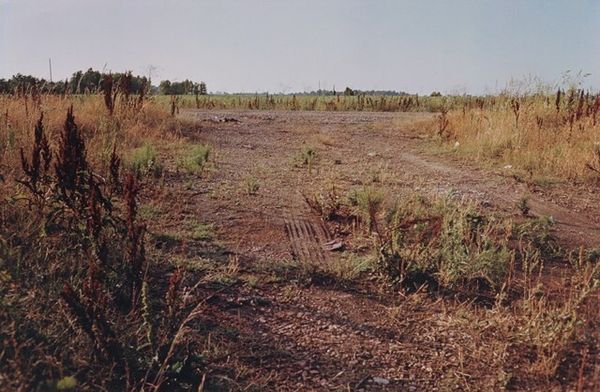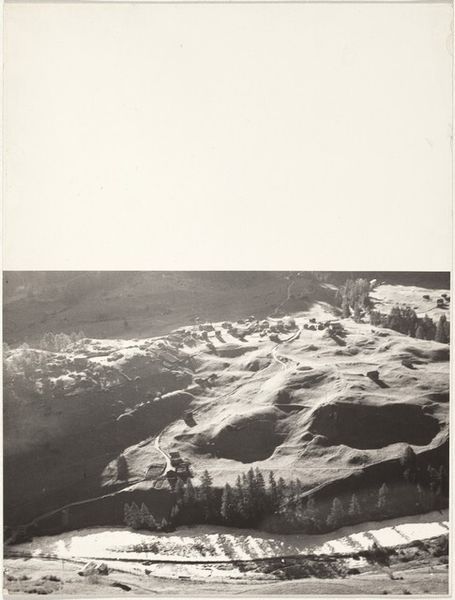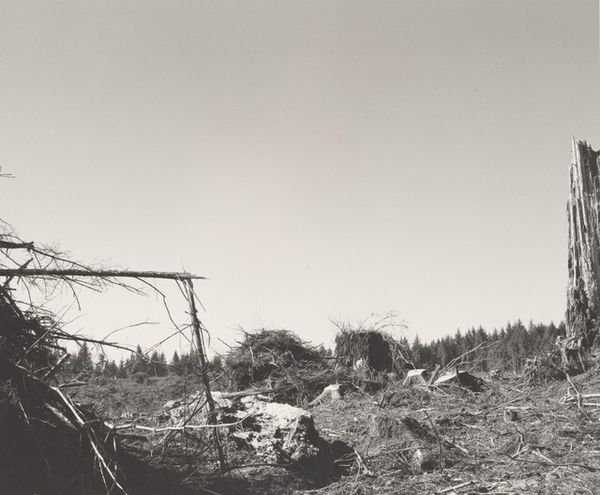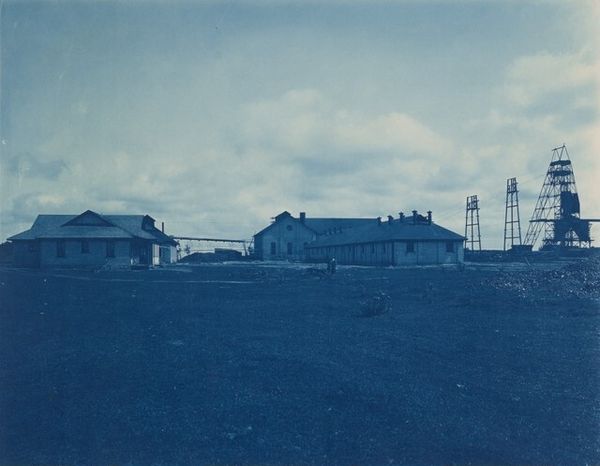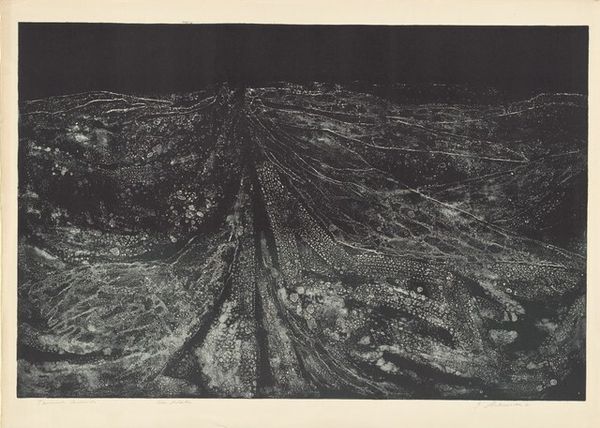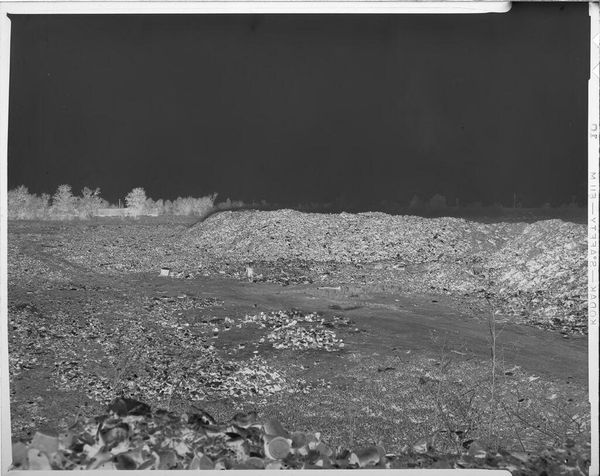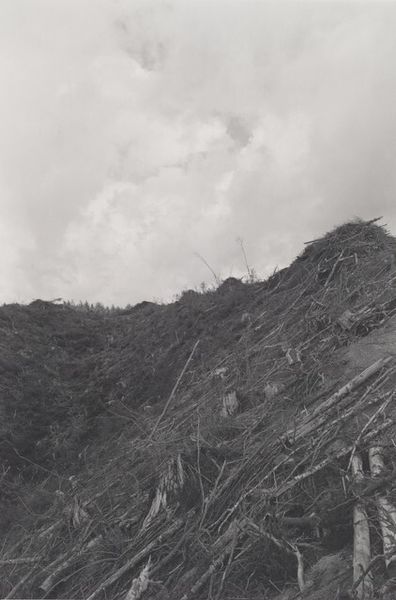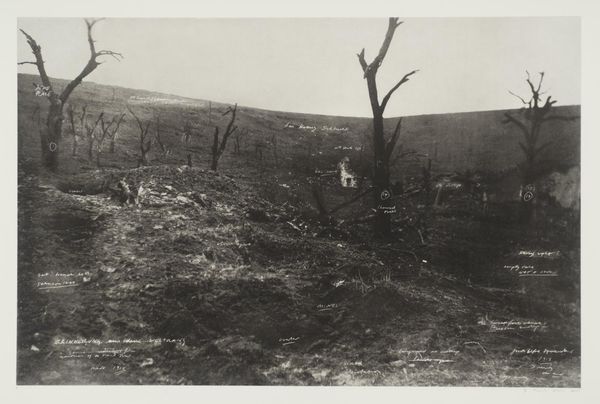
photography, gelatin-silver-print
#
landscape
#
outdoor photography
#
photography
#
gelatin-silver-print
#
naturalism
Dimensions: image: 26.5 × 34.1 cm (10 7/16 × 13 7/16 in.) sheet: 35.4 × 42.8 cm (13 15/16 × 16 7/8 in.)
Copyright: National Gallery of Art: CC0 1.0
Editor: Here we have "Entrance to the Mine," a gelatin-silver print made in 1907. It’s… very blue! I can't quite tell where this photograph was taken, but I'm struck by how desolate and otherworldly it feels. What’s your initial take on it? Curator: I see a record of industrial labor, plainly documented. Forget aesthetics, this print provides evidence. A specific mine, the year 1907... How do we interpret the labor that took place at the mine entrance through the physical manipulation of the silver gelatin process, the materiality of the image itself? Editor: That’s an interesting point. I hadn’t considered the labor that goes into creating the image itself. Does the choice of gelatin-silver specifically say something about the conditions in which this photo was made? Curator: Certainly! The very means of photographic production reflect, I would say, the conditions of resource extraction. Silver, like the minerals pulled from the earth in the mine, demands labor to transform raw material into a usable commodity, in this case an image. The stark blue hue almost mimics the colour of the uniforms worn by miners at the time. How much control did the photographer exert over that? Editor: It’s as if the print itself is mimicking the scene it’s documenting, drawing a parallel between image creation and resource extraction. Would this type of image have been common then? Curator: Early photography was quickly industrialized. And this photograph isn't so far removed from purely functional documentation – yet it offers much more by highlighting its own making and referencing industrial activity more broadly, making both intertwined processes highly visible and palpable. Editor: That makes me see the print very differently! I was initially focused on the scene, but now I realize the photograph itself is also an object shaped by material processes. Curator: Exactly! Considering the image itself *as* a manufactured product offers new levels of analysis and understanding.
Comments
No comments
Be the first to comment and join the conversation on the ultimate creative platform.
